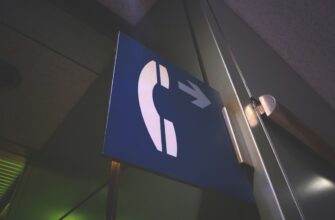🎮 Level Up with $RESOLV Airdrop!
💎 Grab your free $RESOLV tokens — no quests, just rewards!
🕹️ Register and claim within a month. It’s your bonus round!
🎯 No risk, just your shot at building crypto riches!
🎉 Early birds win the most — join the drop before it's game over!
🧩 Simple, fun, and potentially very profitable.
- Why Guarding Your Ledger Is Non-Negotiable
- Physical Ledger Security: Protecting Tangible Records
- Digital Ledger Fortification: Cybersecurity Essentials
- Access Management: Minimizing Insider Threats
- Audit Trails & Monitoring: Your Digital Watchdog
- Disaster Recovery: Planning for the Worst
- FAQ: Guarding Ledgers Safely
Why Guarding Your Ledger Is Non-Negotiable
Whether managing financial records, blockchain transactions, or inventory logs, ledgers form the backbone of organizational truth. A single breach can trigger financial ruin, legal penalties, or irreversible data loss. This guide details actionable best practices to guard physical and digital ledgers against theft, corruption, and human error—because when your ledger fails, your entire operation falters.
Physical Ledger Security: Protecting Tangible Records
For accounting books, lab journals, or legal registries, physical security demands layered defenses:
- Restricted Access Storage: Store ledgers in fireproof safes or locked cabinets in access-controlled rooms. Limit keys to essential personnel only.
- Environmental Controls: Maintain stable temperature/humidity to prevent deterioration. Avoid basements (flood risk) and direct sunlight.
- Chain-of-Custody Logs: Document every person handling physical ledgers with timestamps and purpose of access.
- Disaster Preparedness: Keep backups off-site and use water-resistant containers. Test recovery protocols annually.
Digital Ledger Fortification: Cybersecurity Essentials
Blockchain networks, databases, and spreadsheets require robust technical safeguards:
- End-to-End Encryption: Encrypt data at rest (AES-256) and in transit (TLS 1.3+). Never store decryption keys with the data.
- Multi-Factor Authentication (MFA): Mandate MFA for all ledger access—combine passwords with biometrics or hardware tokens.
- Air-Gapped Backups: Maintain offline backups disconnected from networks. Follow the 3-2-1 rule (3 copies, 2 media types, 1 off-site).
- Version Control: Use Git or blockchain’s immutable properties to track changes and prevent tampering.
Access Management: Minimizing Insider Threats
Over 34% of data breaches involve internal actors. Mitigate risks with:
- Role-Based Permissions: Grant “least privilege” access. Accountants shouldn’t delete entries; auditors shouldn’t edit.
- Automatic Session Timeouts: Set 15-minute inactivity locks, especially for shared workstations.
- Exit Protocols: Immediately revoke access when employees depart or change roles. Audit permissions quarterly.
Audit Trails & Monitoring: Your Digital Watchdog
Real-time oversight detects anomalies before they escalate:
- Automated Logging: Record all user actions—logins, edits, exports—with immutable timestamps and user IDs.
- Anomaly Alerts: Configure systems to flag unusual activity (e.g., bulk downloads or after-hours access).
- Third-Party Audits: Conduct independent reviews biannually to uncover vulnerabilities.
Disaster Recovery: Planning for the Worst
When breaches or disasters strike, a plan prevents chaos:
- Redundant Systems: Replicate critical ledgers across geographically dispersed servers or cloud regions.
- Tested Recovery Drills: Simulate ransomware attacks quarterly to validate backup integrity and team response times.
- Legal Compliance Kits: Store breach notification templates and regulator contacts for rapid response.
FAQ: Guarding Ledgers Safely
Q: How often should I back up digital ledgers?
A: Daily for active ledgers; real-time for high-transaction systems like blockchain. Test restores monthly.
Q: Are paper ledgers still relevant with digital options?
A: For legal/regulatory requirements (e.g., notarized documents), physical copies remain essential—but digitize with OCR for backup.
Q: What’s the biggest vulnerability in ledger security?
A: Human error. Phishing and misconfigured access cause 88% of breaches. Continuous training is critical.
Q: Can blockchain eliminate ledger security risks?
A: No. While immutable, private keys can be stolen, and “51% attacks” threaten public chains. Layer security protocols.
Q: How long should audit logs be retained?
A: Minimum 7 years for financial records (per IRS/FTC). Align with industry regulations like GDPR or HIPAA.
Implementing these practices transforms ledger security from reactive to proactive. Start with access controls and encrypted backups—your future self will thank you when threats emerge.
🎮 Level Up with $RESOLV Airdrop!
💎 Grab your free $RESOLV tokens — no quests, just rewards!
🕹️ Register and claim within a month. It’s your bonus round!
🎯 No risk, just your shot at building crypto riches!
🎉 Early birds win the most — join the drop before it's game over!
🧩 Simple, fun, and potentially very profitable.








